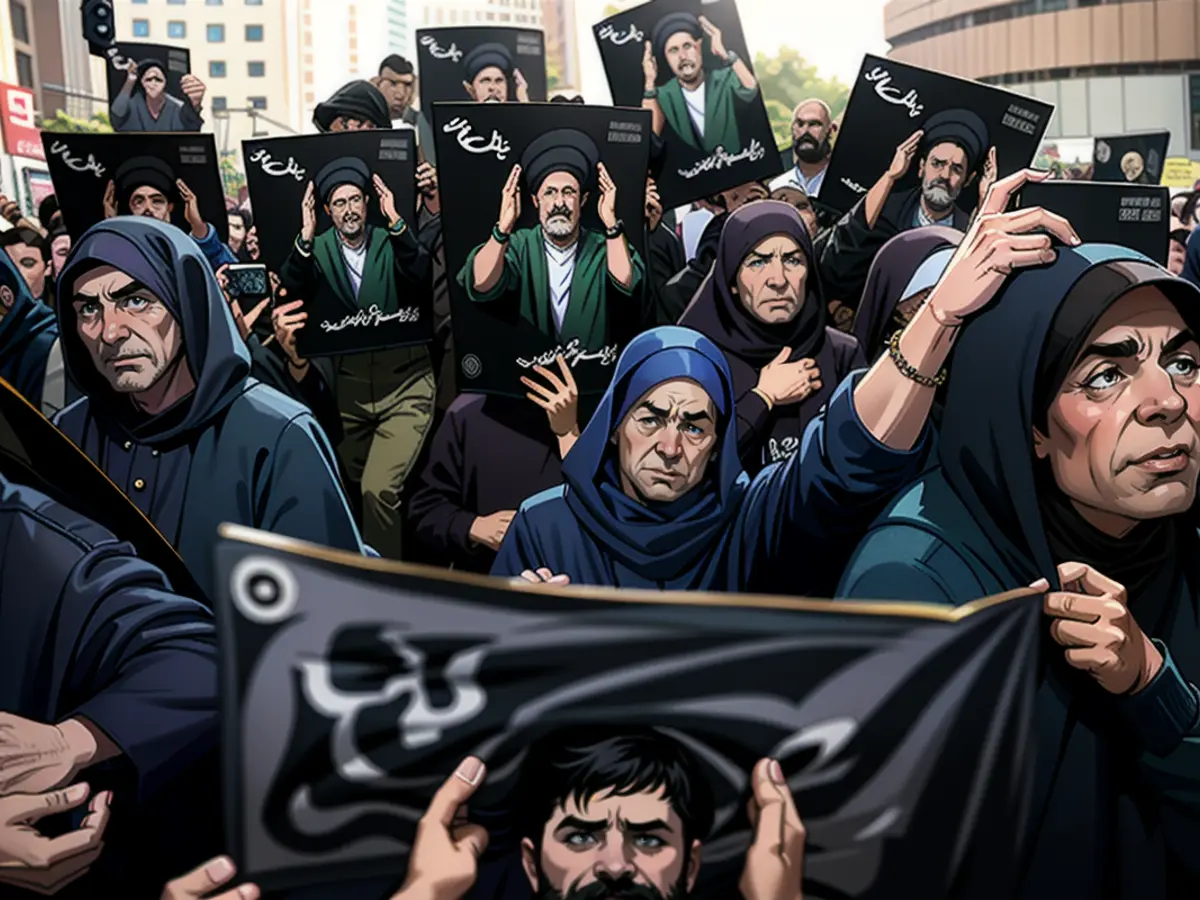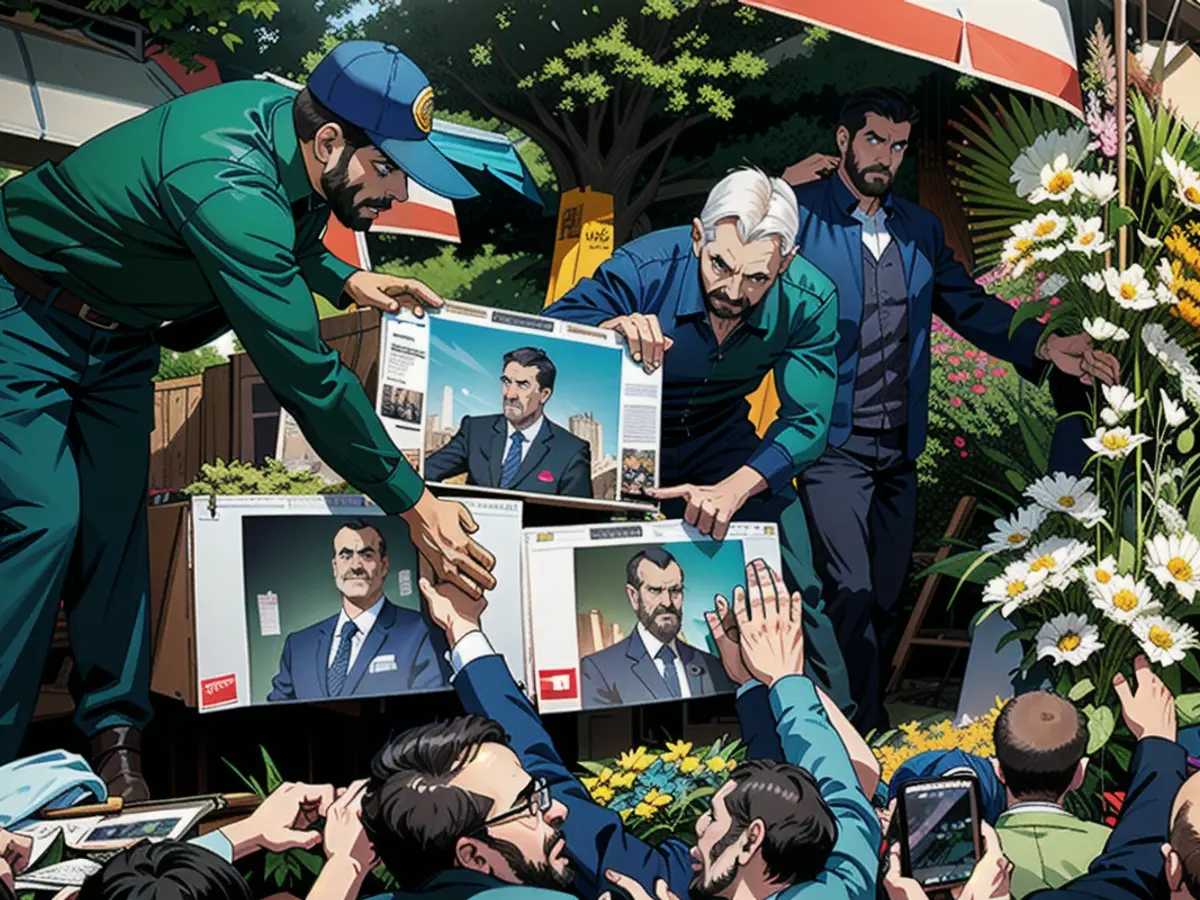Allegations arise in Iran that US sanctions culminated in the Raisi helicopter accident; however, the truth might be more intricate.
President Ebrahim Raisi's body was carefully removed from the crash site as ex-Foreign Minister Javad Zarif openly blamed the United States on state TV. He claimed that the U.S. was responsible for the demise of the president and his companions by sanctioning the sale of the aviation industry to Iran, leading to their deaths. U.S. officials quickly denied these accusations, calling them baseless.
The causes of the helicopter crash could be many, including shoddy maintenance or human error in the foggy weather. However, Turkish Transport Minister Abdulkadir Uraloglu cautioned against jumping to conclusions too soon. Early indications pointed towards an accident due to adverse weather conditions.
It's puzzling why Iran chose to fly through the mountains instead of taking a detour or going to an alternate destination. Perhaps they were overconfident in their abilities to navigate the treacherous terrain.
Raisi, accompanied by Foreign Minister Hossein Amir-Abdollahian, the provincial governor Malek Rahmati, and Tabriz's influential Imam of Friday prayers, Mohammed Ali Alehashem, left the helicopter when visibility was good. They were visiting the Qiz Ghal'e dam with their Azeri counterpart, Ilham Aliyav. The day had started well, with signs of improved relations between the two countries.
However, the weather began to worsen as the helicopter followed a route that took them through the treacherous, rugged, and unforgiving 1,800-meter (5,900-foot) mountain peaks on their way to Tabriz. The cold and wet weather had already improved after seasonal rains, but another weather front was approaching, bringing even more fog.
The reason for choosing this route and risking both president and foreign minister in the same helicopter remain a mystery.
It soon became apparent that Iran was unprepared for dealing with a disaster of such magnitude. Despite plenty of manpower, they lacked the necessary technology to efficiently locate and rescue the victims.
Turkish drone AKINCI, flying above the clouds, was the first to spot remnants of the helicopter. Iran, which builds, uses, and sells long-range drones to countries such as Russia for use in Ukraine's war and to non-state actors like Iraqi militias and Yemen's Houthis, oddly had no drone capable of basic surveillance.
Iran also requested night vision-equipped helicopters from Turkey and Russia. If they had them, they couldn't get them there quickly enough.
This night was critical to Iran and its Supreme Leader, Ayatollah Ali Khamenei, but their military might - showcased through proxies in the Middle East and their ally Russia - appeared insufficient.
Zarif, former Foreign Minister, wanted the world to think Iran's technological core had been weakened by U.S. sanctions. Still, even this claim is marred by arrogance.
If, as Zarif argues, the president's helicopter was grounded due to a scarcity of high-quality parts due to U.S. sanctions, why place the president and the foreign minister in an aircraft deemed potentially unreliable? What other options were there? If there weren't any, the question becomes even more pressing.
Iranian presidents have many responsibilities, and Raisi was no exception. The decision to trust chance instead of prioritizing better transport options highlights a level of overconfidence that was, unfortunately, fatal.
The tragic irony is that Raisi, who built Iran's image of strength, found it empty when he needed it most.

Read also:
- This will change in December
- Dikes withstand water masses so far - Scholz holds out the prospect of help
- Fireworks and parties ring in 2024 - turn of the year overshadowed by conflicts
- Attacks on ships in the Red Sea: shipping companies avoid important trade route
The international community expresses concern over the alleged involvement of U.S. sanctions in the Raisi helicopter accident, with some questioning if the Middle East tensions played a role.
Despite the ongoing tensions in the Middle East, Iran continues to rely on its aviation industry, despite sanctions and potential vulnerabilities, as demonstrated by President Raisi's flight.
Source: edition.cnn.com







